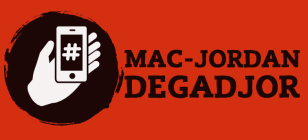#Digital2021: The state of Ghana’s 2021 digital landscape is mapped out in this new report by We Are Social and Hootsuite.
Digital innovation has played a critical role in strengthening the relationship between government policies, regulatory institutions, and the desired economic, political, and social outcomes, and it continues to do so.
The internet has altered the way economies of scale are achieved, particularly in the delivery of online services. The impact of asymmetric information has been altered by the use of digital platforms in the matching of buyers and sellers. New industries have sprung up that we could not have imagined even five or ten years ago.
Ghana’s digital future is being mapped out in a new report by We Are Social and Hootsuite. It shows that social media continues to drive connected activity around the world, with global social media user numbers fast approaching another impressive milestone.
Ghana’s Population
In January 2021, Ghana had a population of 31.40 million people. Between January 2020 and January 2021, the population increased by 655 thousand (+2.1%). According to the most recent United Nations estimates, 49.3 percent of Ghana’s population is female, while 50.7 percent is male.
Out of this total, urban areas account for 57.7 percent of Ghana’s population, while rural areas account for 42.3 percent.
Internet Users in Ghana
Between 2020 and 2021, the number of internet users in Ghana increased by 943 thousand (+6.4 percent). In January 2021, Ghana’s internet penetration was 50.0 percent. Ghana had 15.70 million internet users in January 2019, a 6.4 percent increase from the previous year.
Mobile Penetration & Social Media Statistics
In January 2021, Ghana had 15.70 million internet users. The number of internet users in Ghana increased by 943 thousand (+6.4 percent) between 2020 and 2021. Ghana’s internet penetration rate was 50.0 percent in January 2021. There were 8.20 million social media users in January 2021, equivalent to 26.1 percent of the total population. Between 2020 and 2021, the number of Ghanaians on social media increased by 2.2 million (+37%) between January 2020 and January 2021.
Between January 2020 and January 2021, the number of mobile connections in Ghana increased by 3.1 million (+8.1%). There were 41.69 million mobile connections in January 2021, which equated to 132.8 percent of the total population.
Ghana has a significant gender gap in the use of social media. Users are more likely to be men, with only 38 percent of users being female. The share of female users is a lot higher in Greater Accra, the Central region and Ashanti. Facebook’s users are mainly young, with around three quarters under 35, according to the latest data from the social media giant.
According to the World Bank’s 2021 Ghana Rising Report;
4G coverage is lower at 68 percent of the population, with a stark rural-urban divide, but Ghana performs ahead of many of its peers. 4G coverage is below the market frontier, estimated at just under 80 percent, but Ghana has wider coverage than most comparators, except for Rwanda.
The low coverage mainly stems from rural areas, which have coverage of only 41 percent, particularly in the north of Ghana, while coverage in urban areas is high at 88 percent. 3G and 4G coverage are expected to approach 2G coverage if the right regulations are in place. 4G coverage is expected to increase in the coming years due to the higher expected demand. Almost all the expected gains in mobile broadband coverage will come from upgrading existing 2G-only sites (given that additional coverage from new ‘greenfield’ sites is likely to be limited, as highlighted by the market frontier for 2G).
Facebook’s users in Ghana are heavily concentrated in urban areas, which have a higher proportion of female users. The total number of Facebook users (left) and the female user share (right).
The slide show below contains all the data, statistics, and trends you need to understand the latest digital trends in Ghana in 2021.
















